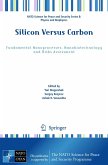During evolution silica deposition has been used in Protozoa, Metazoa and in plants as skeletal elements. It appears that the mechanisms for the formation of biogenic silica have evolved independently in these three taxa. In Protozoa and plants biosilicification appears to be primarily driven by non-enzymatic processes and procedes on organic matrices. In contrast, in sponges (phylum Porifera) this process is mediated by enzymes; the initiation of this process is likewise dependent on organic matrices.
In this monograph the role of biosilica as stabilizing structures in different organisms is reviewed and their role for morphogenetic processes is outlined. It provides an up-to-date summary of the mechanisms by which polymeric biosilica is formed. The volume is intended for biologists, biochemists and molecular biologists, involved in the understanding of structure formation in living organisms and will also be very useful for scientists working in the field of appliedNanotechnology and Nanobiotechnology.
In this monograph the role of biosilica as stabilizing structures in different organisms is reviewed and their role for morphogenetic processes is outlined. It provides an up-to-date summary of the mechanisms by which polymeric biosilica is formed. The volume is intended for biologists, biochemists and molecular biologists, involved in the understanding of structure formation in living organisms and will also be very useful for scientists working in the field of appliedNanotechnology and Nanobiotechnology.








